By late winter, we’re all ready for something fresh and new, some new life and color to enjoy. Unfortunately, most flowers and plants are still months away from blooming.
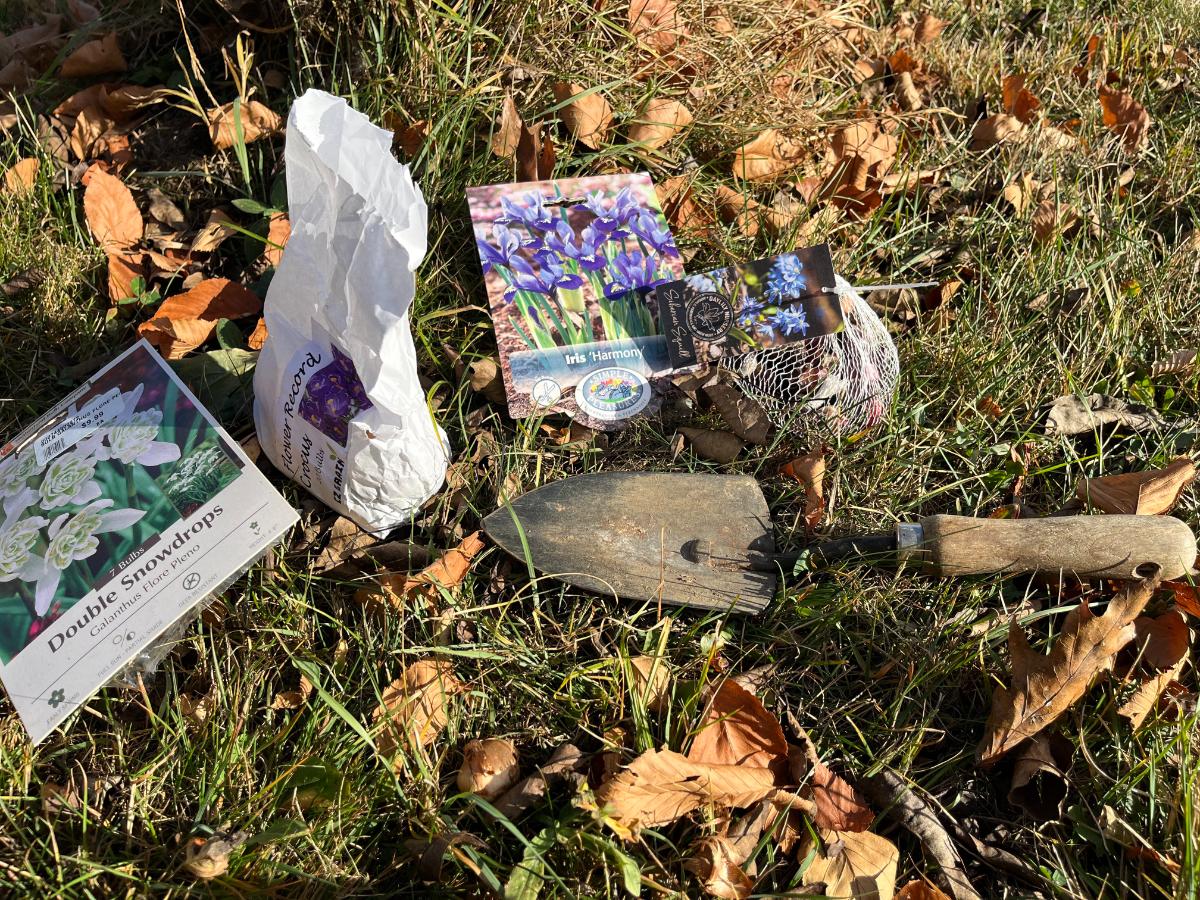
But there are a handful of flowers that bloom in the late winter. They can even bring us life and color through the snow!
And YES! Even for gardeners who live in the north!
Jump to:
- Early Blooming Fall-Planted Bulbs: the Answer to the Winter Blues
- Fall planting is imperative!
- 4 Perfect Bulbs for a Miniature Winter Blooming Garden
- 1. Snowdrops
- 2. Squill (aka Scilla)
- 3. Crocus
- 4. Reticulated Iris
- How to Plant and Arrange Your Miniature Winter Blooming Garden
- Where to Plant Your Winter Bulb Garden
- Mix Colors and Varieties for More Diversity and Interest
- Don’t Worry About the Grass!
- Extend Your Early-Blooming Garden through Spring With These “Next Step” Bulbs
- A Mini Garden that Will Treat You for Years to Come!
Early Blooming Fall-Planted Bulbs: the Answer to the Winter Blues
The best bulbs to use for a garden of the earliest blooms are fall-planted bulbs that bloom first in the late winter and early spring.
These happen to be, for the most part, short, miniature flowers, topping out at around six inches or less.
The great thing about these bulbs is they share similar early growing and bloom times. By planting them together in a mixed planting, you can create a little oasis of a winter-blooming garden.
Because these flowers are about the same size and height and because they bloom at around the same times, they mix perfectly for a mini winter blooming garden.
Fall planting is imperative!
It is important that you plant your winter blooming bulbs in the fall (or early winter). You can plant them any time while the ground is unfrozen and workable.
With that in mind, also keep in mind that these winter/spring flowering bulbs need to be cold stratified. That means they need to spend at least six to eight weeks in the ground to experience cold temperatures before they will grow and bloom.
Since these winter-blooming bulbs can sprout and grow as early as January, try to get them in the ground by the beginning of November. The more northerly you live, the later their bloom time will be, and you will have more flexibility so you can plant a little later. However, you are also likely to have frozen ground sooner.
For the best results, plant your mini winter garden in October or November.
These bulbs will not perform if you wait until the spring to plant them. You will have upset their natural growth and bloom cycle. They may or may not survive in the ground to grow next year.
4 Perfect Bulbs for a Miniature Winter Blooming Garden
1. Snowdrops
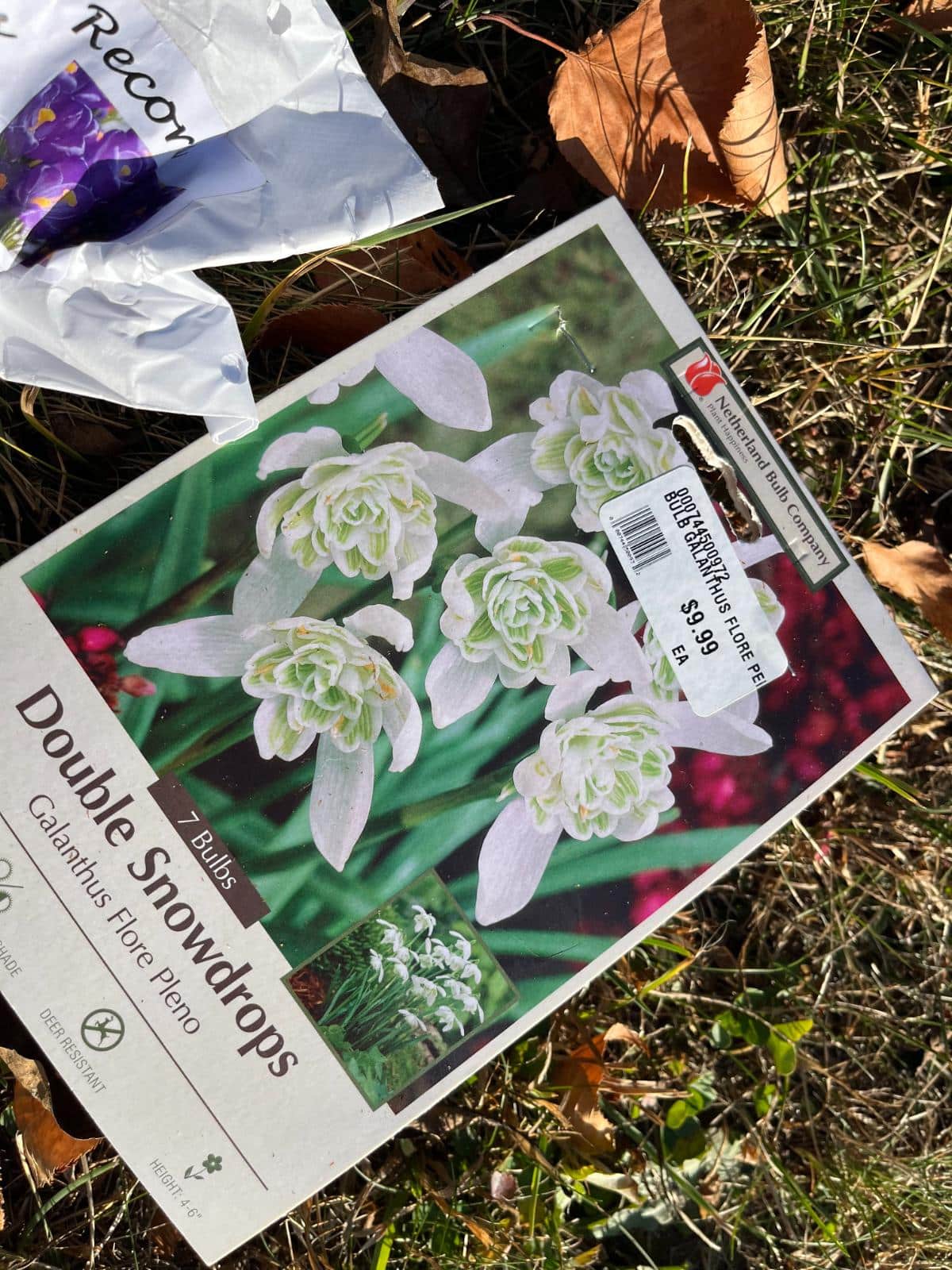
| Name: | Galanthus nivalis |
| Hardiness Zones: | 3 through 9 |
| Planting Depth: | 3 inches |
| Plant Height: | 4 to 6 inches, with some varieties reaching up to 8 inches |
| Bloom Time: | January/February through March |
Snowdrops are about the earliest blooming flowers you can get. And as their name suggests, they’re often blooming even though there is snow on the ground.
Snowdrops are small, with an average height of about five inches (4 to 6 inches tall). They are delicate-looking but have tough little flowers that bow at the neck.
As with most of these bulbs, snowdrops are resistant to deer, chipmunks, and squirrels.
When they start blooming, it will depend on your climate and conditions. In mild years, they may bloom earlier than usual, but they are a sure harbinger of eventual spring and a bright spot of life in the winter!
2. Squill (aka Scilla)
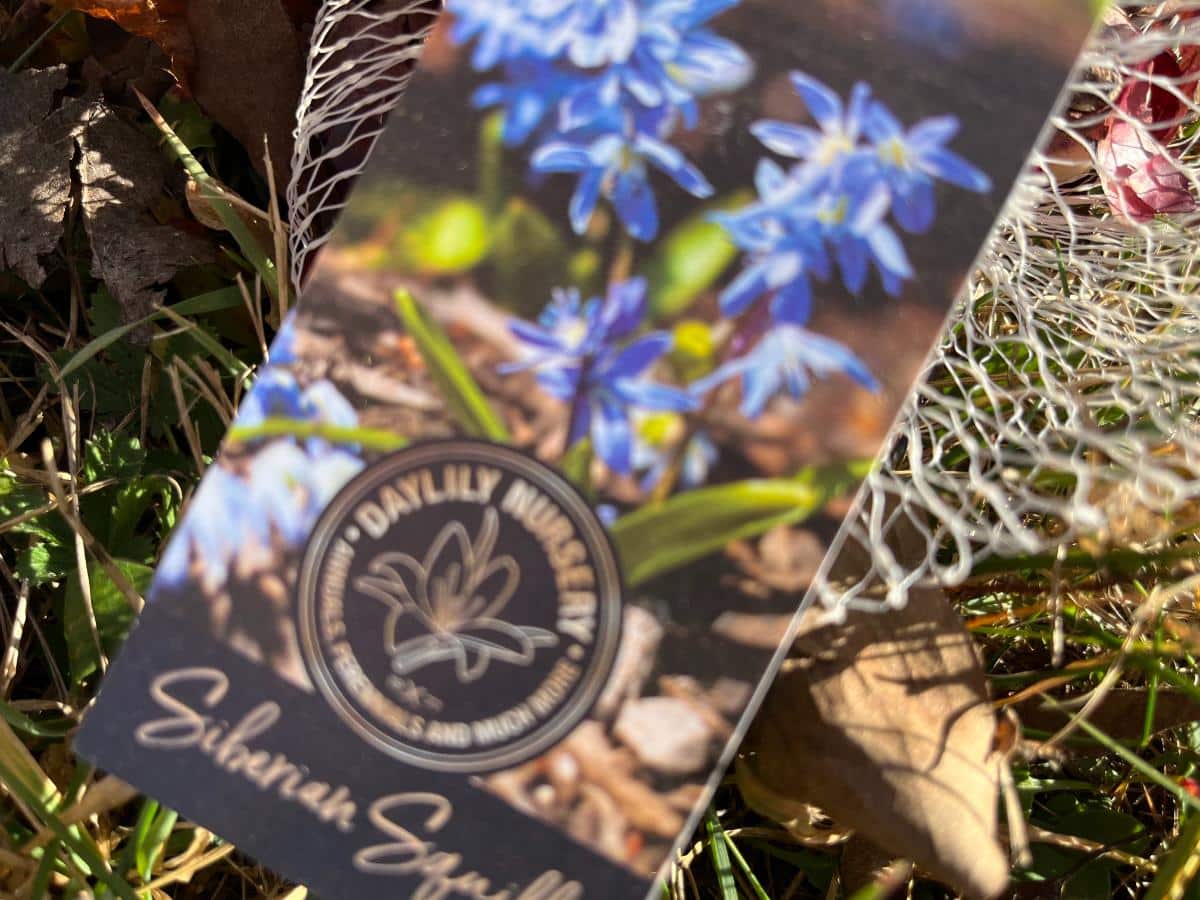
| Name: | Scilla Siberica Blue |
| Hardiness Zones: | 2 through 8 |
| Planting Depth: | 3 inches |
| Plant Height: | 4 to 6 inches |
| Bloom Time: | February through April |
As its name suggests, this is a winter-hardy flower that is bred to live in the cold. The bulbs naturalize easily to create a pretty blue carpet with a periwinkle tinge. They are similar in size to snowdrops, with a more open petal formation that is more like a classic flower.
Squill has the added benefit of being deer resistant (to the point of being virtually deer-proof; deer don’t eat squill bulbs or plants).
3. Crocus
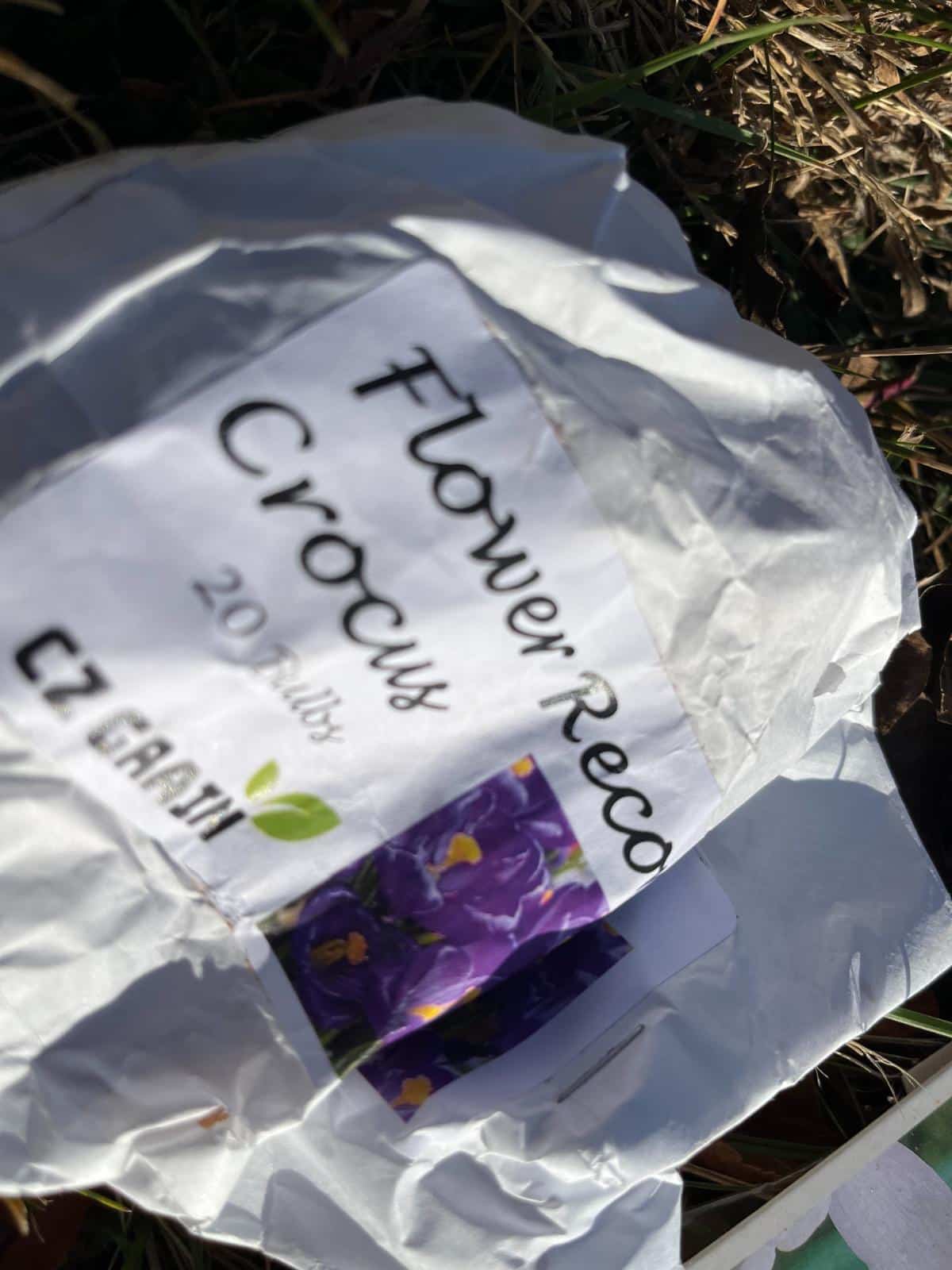
| Name: | Crocus |
| Hardiness Zones: | 3 through 8 |
| Planting Depth: | 3 inches |
| Plant Height: | 3 to 6 inches |
| Bloom Time: | January through March |
Crocuses are small, open-cupped flowers that are among the earliest of the season. It is very common to see them growing through snow. They are unaffected by returning cold weather and winter storms.
There are several color varieties of crocuses. You can buy them in a single color if you prefer, but they are often sold in a mix that typically includes white, purple, and yellow.
Crocuses are also resistant to deer. Bees like them, and they are a good source of food for bees that wake up and fly on the first few warm days (even if they return to their slumber or low hive activity).
4. Reticulated Iris
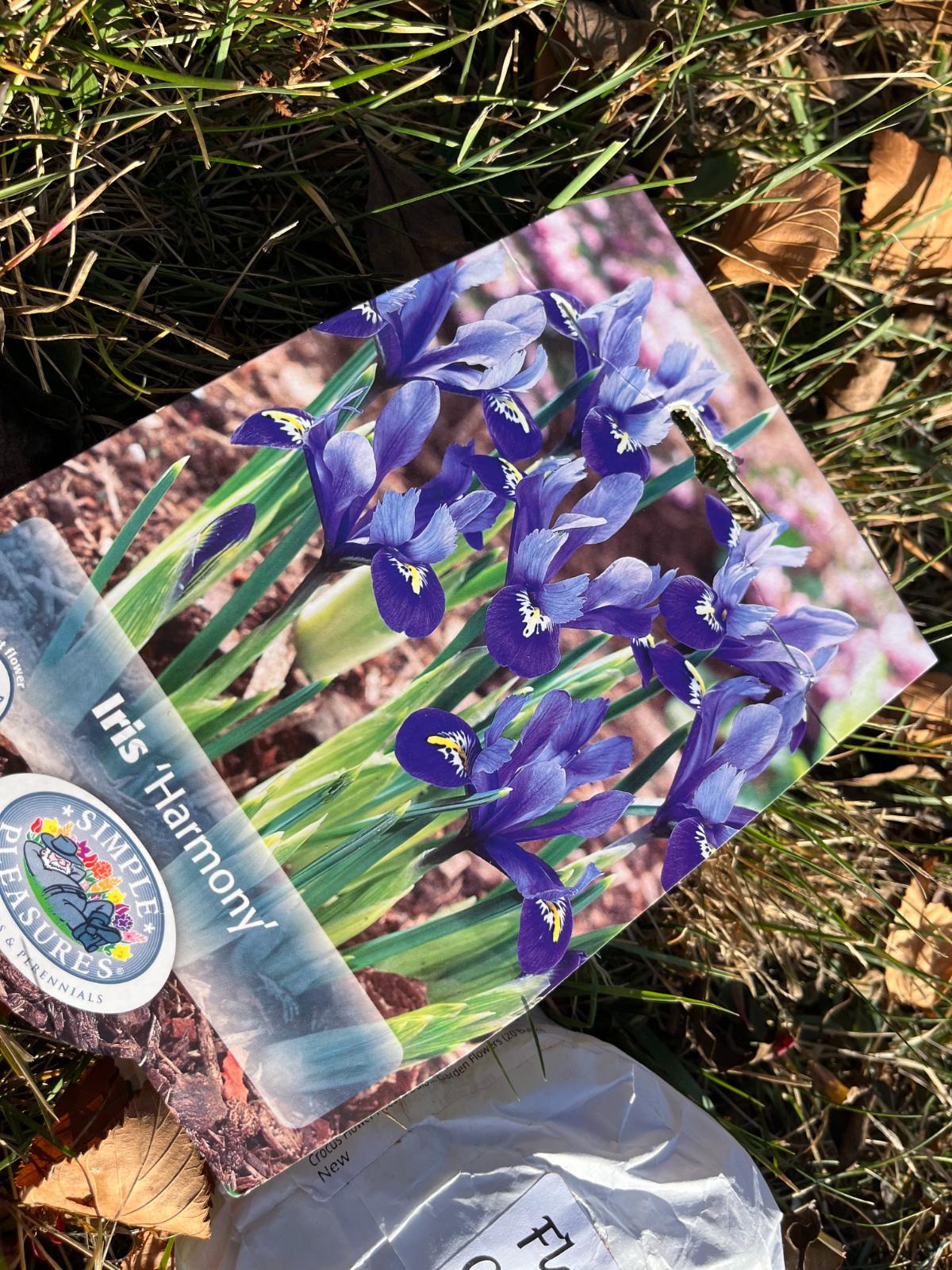
| Name: | Iris reticulata |
| Hardiness Zones: | 4 through 9 |
| Planting Depth: | 3 inches |
| Plant Height: | 3 to 6 inches |
| Bloom Time: | February through March, some into April |
Also known as dwarf iris, reticulated irises are a miniature variety of iris that are early and cold hardy. They have a long bloom period. You may find dwarf irises in mixes with yellow, blue/periwinkle, and purple, but purple blue is the most common color of reticulated iris.
As with the other winter garden bulbs, these bulbs, too, are resistant to deer.
Reticulated irises have a similar blossom shape as traditional, full-sized irises, but leaning a little closer to classic flower shapes.
Dwarf iris naturalizes well and will spread to fill in and expand your mini winter blooming garden even further over the years.
How to Plant and Arrange Your Miniature Winter Blooming Garden
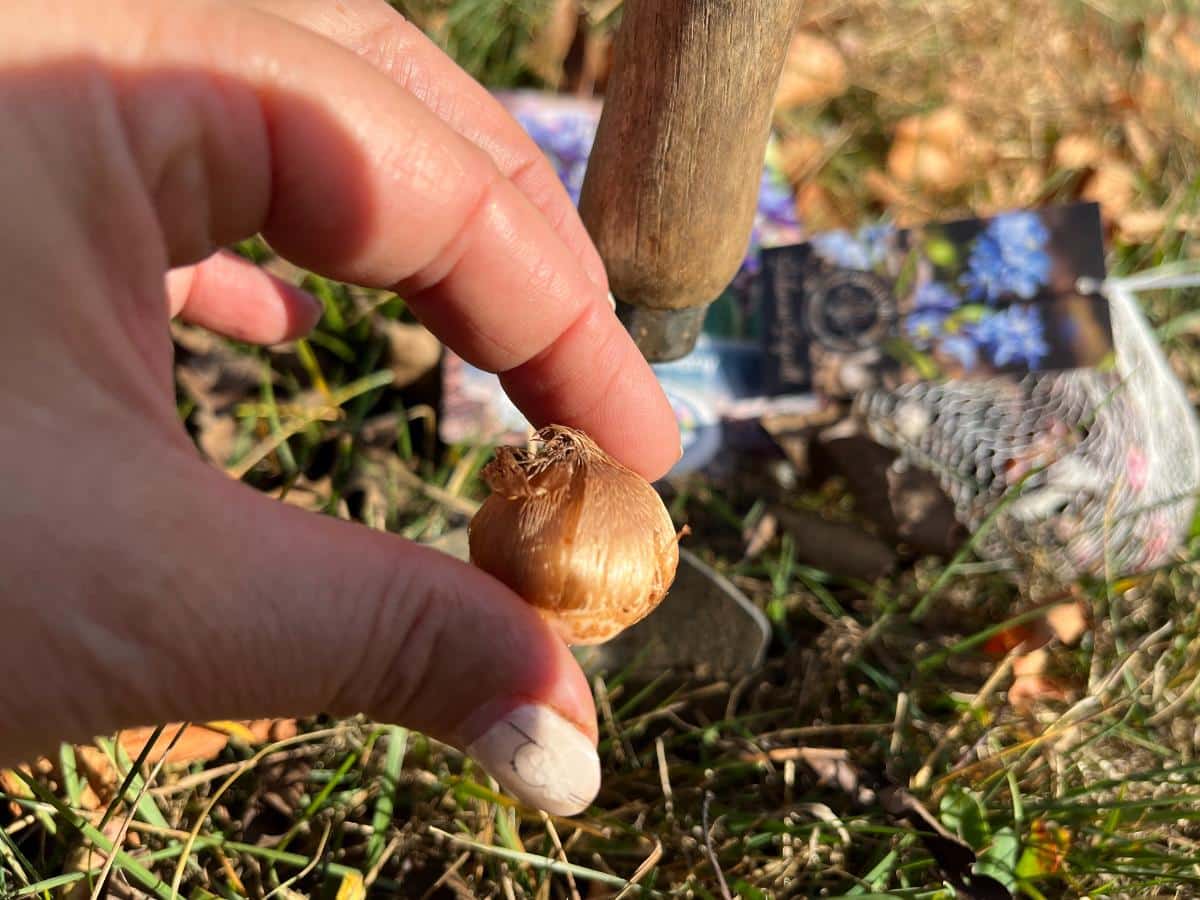
You could separate the flowers by type and create a design, but mixing the flowers and interplanting the four types works best. Then, as the bulbs naturalize and spread over time, you will still have a balance of different mixed flowers, and you won’t be stressed if a squill pops up in the middle of your crocus patch.
To plant your bulbs:
- If the soil is dry, water the ground before you plant your bulbs. Moist soil is much easier to work. You can do this the day before or several hours before so the moisture has time to sink into the ground and the soil isn’t too muddy to work in.
- Use a hori hori knife or thin bulb knife to plant the bulbs
- Sink the knife down three inches, then wiggle and pull back just wide enough to fit the bulb
- Fit the bulb into the bottom of the hole
- Be sure to plant with the root end down, and the stem end up (look for the remnants of roots and the stem scar)
- Cover and close the hole
- You can plant straight through grass and yard areas; you do not need to remove or kill your lawn
- Water the area after planting if the ground is dry (however, watering before you plant makes planting much easier as the soil will be more workable!)
As you plant, mix the bulbs in the ground, planting each type of bulb spread about evenly around. This will give you a wide swath of mixed plants for an interesting display of colors and textures when the winter garden blooms.
You could mix all the different types of bulbs together in one large bag or pail and plant randomly, but you may get an uneven spread if you can’t spot a difference in the bulbs.
Where to Plant Your Winter Bulb Garden
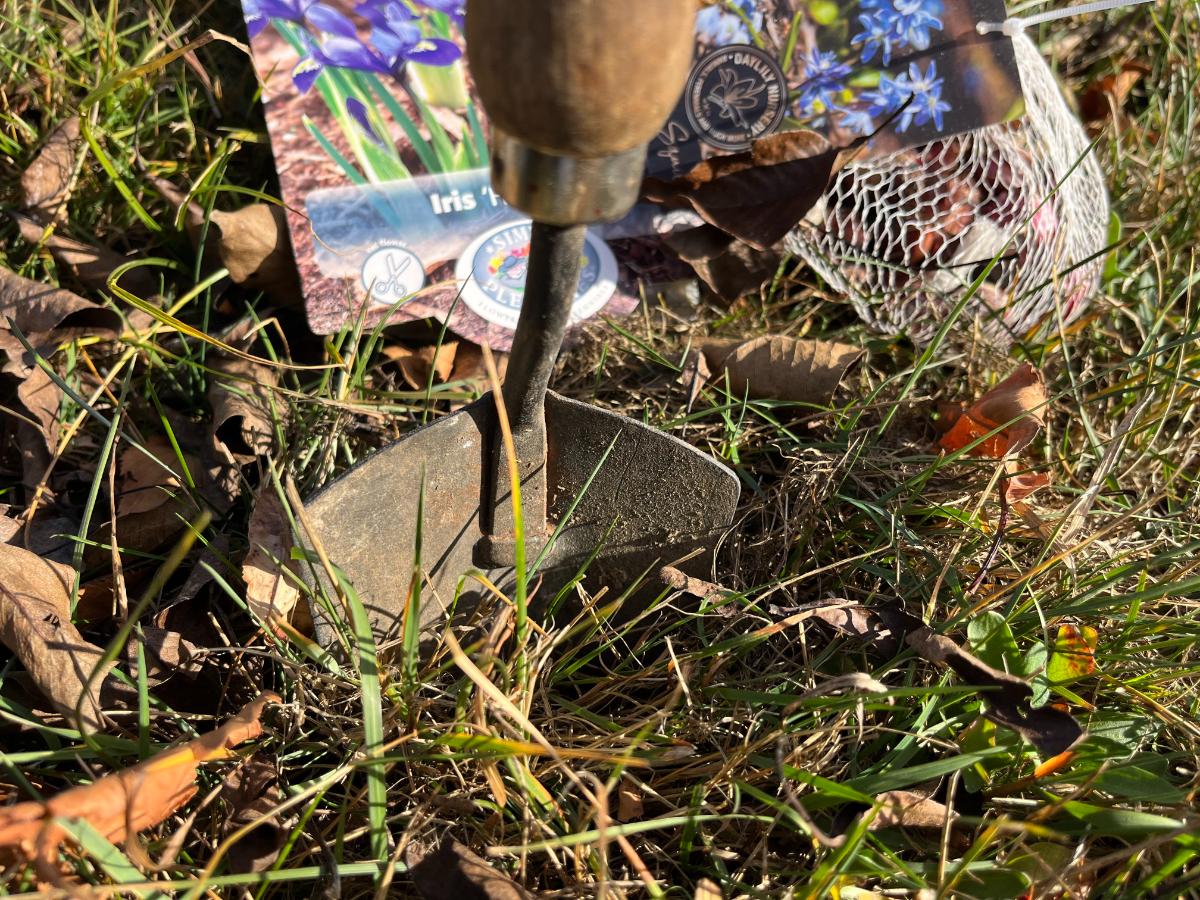
These bulbs will all thrive in varying light conditions, from full sun to partial shade. Also, keep in mind that because they bloom early in the year, deciduous trees will not be in leaf, so even areas that are full shade later in the year are only partial or maybe even full sun when these flowers are growing and blooming.
These bulbs are often enjoyed under trees. They make pretty early spreads in perennial beds, along garden borders, and in rock gardens.
Another popular option is to simply spread your mini winter garden all over your lawn or a stretch of it. You don’t have to give up your lawn, either.
Mix Colors and Varieties for More Diversity and Interest
You can also look into different varieties of each type of bulb. For example, there are double-bloomed varieties of snowdrops that almost look like a miniature cross between snowdrops and daffodils. They are quite pretty.
Some varieties will bloom a little earlier or later than others, too, which gives you an opportunity to extend the bloom life of your mini winter garden into early spring and possibly beyond.
Different color varieties or shapes present yet another opportunity for increasing color and interest in your plantings.
Don’t Worry About the Grass!
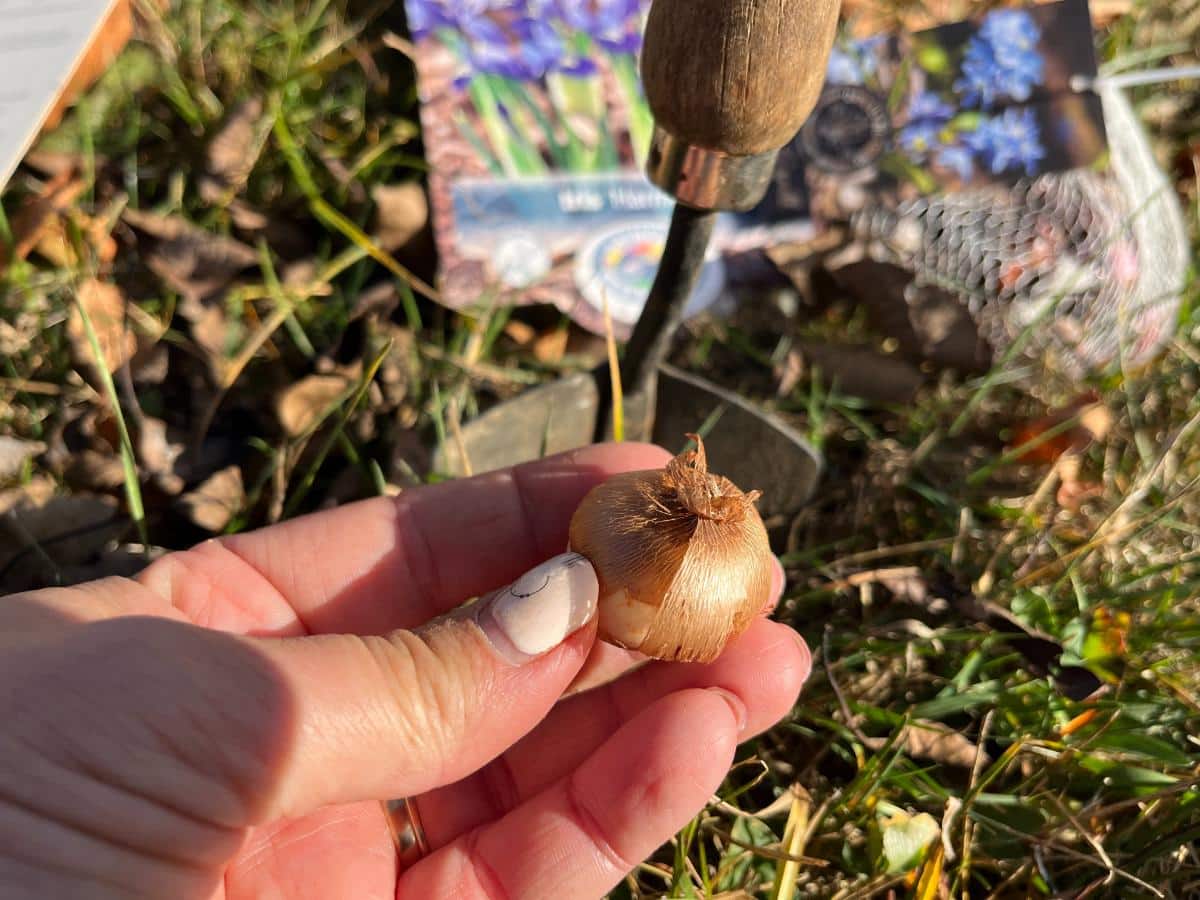
Because these flowers grow and fade long before the grass and other plants are growing, you can plant them in perennial beds or in lawns without impacting your lawn and without killing these little bulbs.
By the time the grass starts growing and you start mowing, these flowers will be finished. Their green growth will be retreating. Whatever growth remains when it is time to start maintaining your lawn can simply be mowed off.
Then, the bulbs will just lie dormant and store energy for next year.
This is a popular choice because it makes double duty of your lawn and brings color when everything else is drab, dormant, and brown.
Extend Your Early-Blooming Garden through Spring With These “Next Step” Bulbs
If you want to go a step further and create a garden that can morph from winter into and through spring, taking you mostly up to the time late spring and summer flowers start, you can plant early spring bulbs amongst the minis. They will follow the mini winter garden as those bulbs finish and the spring flowers start.
For an extended winter through spring garden, plant these bulls along with them in the fall:
- Daffodils -- plant mini daffodils to continue the miniature stature for the size that matches as your winter bloomers fade out or move up to full-sized bulbs. (They won’t compete with the mini bulbs because the mini bulbs will be fading anyway. The full-size flowers can help hide the dying mini plants.)
- Tulips
- Irises (full-size or later blooming miniature varieties)
- Hyacinths (similar but slightly taller in height to the low-growing bulbs above)
- Muscari, aka grape hyacinth (continues the miniature height theme)
A Mini Garden that Will Treat You for Years to Come!
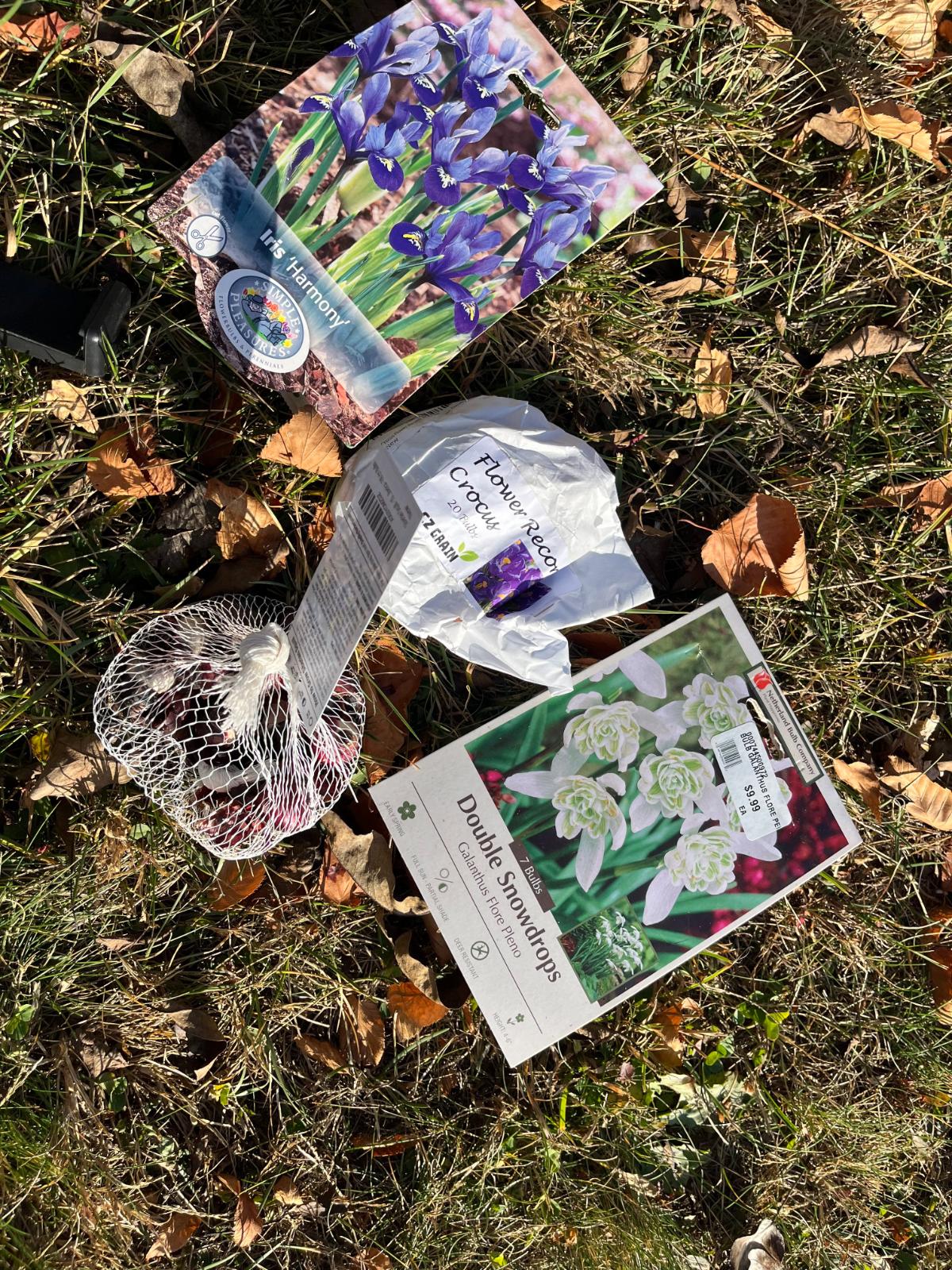
You’ll only need to plant your mini winter garden once. These are all very hardy bulbs. They do not need to be dug up in the fall. As the leaves die back, the bulb will absorb their energy and store it for growth next year.
Over the years, the bulbs will grow others. The plants will naturalize throughout the area, creating an even bigger and bigger patch over time.
You will be able to enjoy your little labor of love for many years with these perennial early-blooming bulbs. You will have a practically everlasting winter garden to enjoy at the end of winter, ready to bring you a bright spot of hope and life every winter and spring.

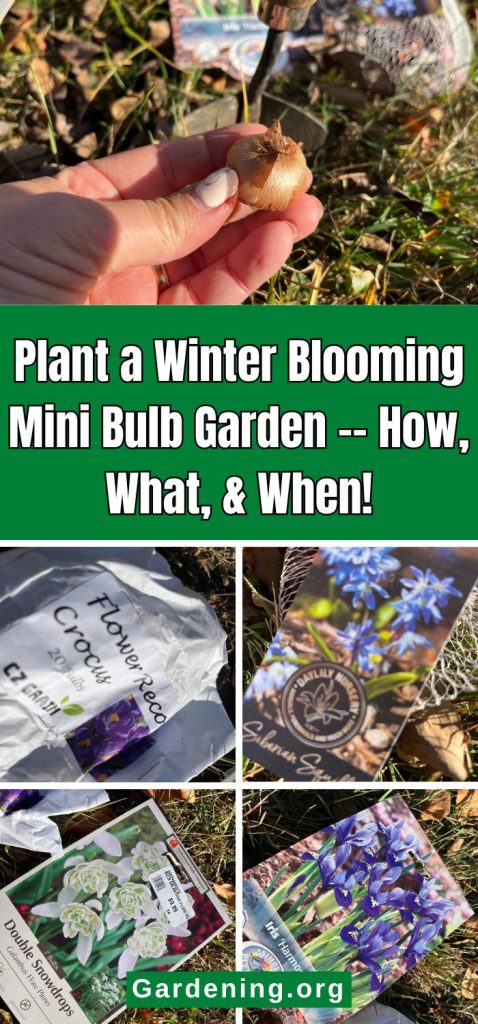
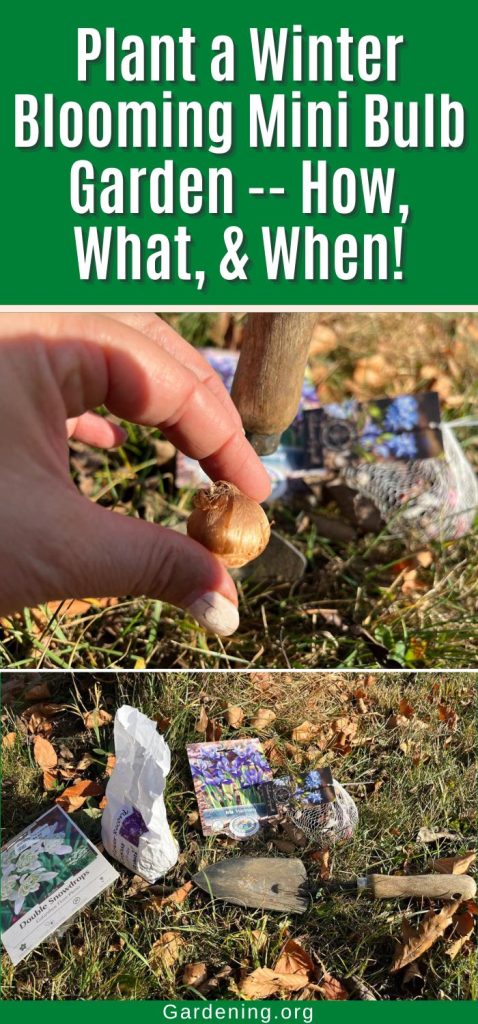
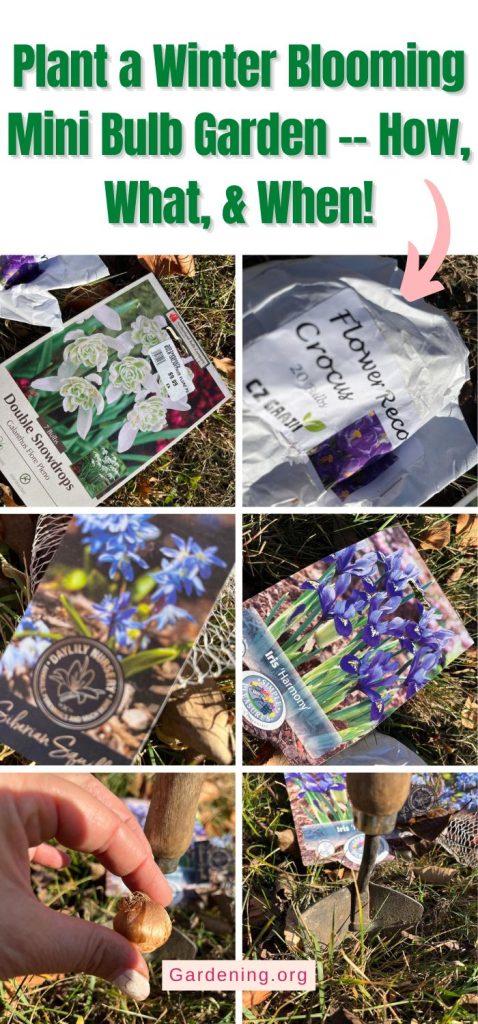
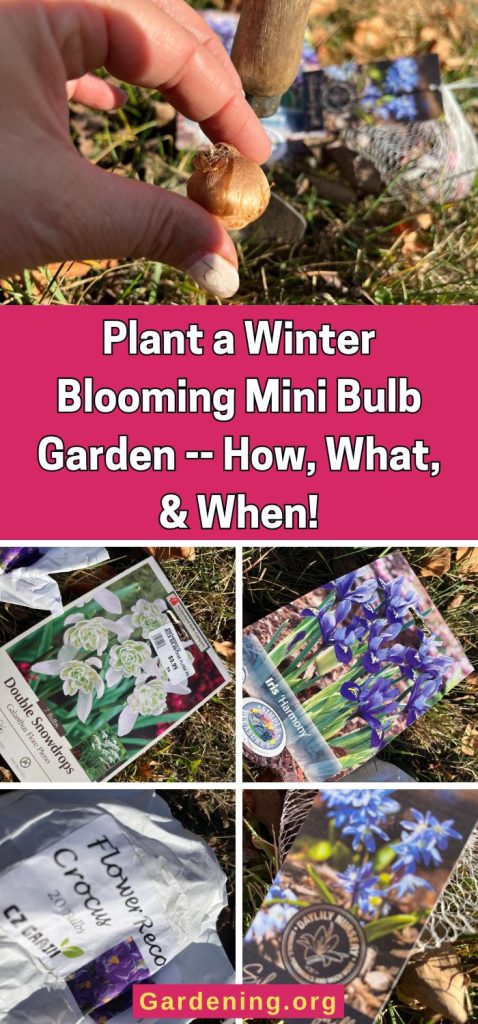




Leave a Reply